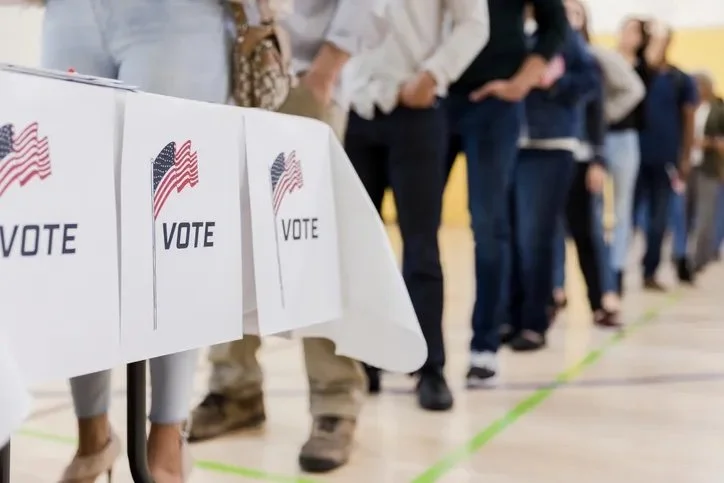The Choreography of Voting
Everything We Need to Know and Do to Exercise Our Rights to Vote
Voting is more than just a civic duty — it’s the cornerstone of our democracy. And it is the same every time you cast a ballot, you contribute to shaping the future of your community, state, and country. This right, fought for by countless individuals over centuries, empowers you to have a say in who represents you and how your government operates. Understanding the importance of voting, the history of voting rights, and the ways to exercise this right effectively is crucial in maintaining the health and integrity of our democratic system.
Why Voting Matters
Voting is the primary means by which citizens influence government decisions and hold elected officials accountable. When you vote, you help decide on key issues such as health care, education, taxes, and public safety. Moreover, your vote contributes to the election of leaders who will make decisions on your behalf at the local, state, and national levels
Yet the importance of voting extends beyond individual issues. It’s about participating in a collective process that upholds the values of freedom, equality, and justice. Voting ensures that diverse voices are heard, and it prevents the concentration of power in the hands of a few. By casting a ballot, you contribute to the democratic principle that government should be by the people, for the people.
A Brief History of Voting Rights in the United States
The journey to secure voting rights for all Americans has been long and fraught with challenges. Initially, voting in the United States was limited to white, landowning men. Over time, this right was gradually extended to other groups, often through significant struggle and advocacy.
Key milestones in the history of voting rights include:
The 15th Amendment (1870): Granted African American men the right to vote. Despite this amendment, many states implemented discriminatory practices, such as literacy tests and poll taxes, to disenfranchise Black voters.
The 19th Amendment (1920): Gave women the right to vote after decades of activism led by suffragists.
The Voting Rights Act (1965): Outlawed discriminatory voting practices that had been used to disenfranchise African Americans, particularly in the Southern states. This landmark law also provided federal oversight in areas with a history of voter suppression.
The 26th Amendment (1971): Lowered the voting age from 21 to 18 in response to arguments that those old enough to be drafted for military service should also have the right to vote.
These advancements did not come easily. They were the result of persistent efforts by individuals and groups committed to ensuring that every citizen has a voice in the electoral process. Furthermore, the struggle for voting rights is ongoing. Efforts to suppress votes and disenfranchise certain populations continue to this day, making it all the more important for everyone to exercise their right to vote.
Voter Suppression and things to look out for when voting
Flaws in the American voting system can have a disproportionate impact on women, immigrants, and people of color. These factors can contribute to a lack of representation and a feeling of disenfranchisement among these identities, hindering their ability to advocate for their own interests and shape the direction of the country. If we know and understand all the ways that our rights could be hindered, we can better equip ourselves to fight back!
Map of school districts in LA County demonstrating the abstraction and manipulation of district boundaries to favor certain neighborhoods.
Gerrymandering: the practice of drawing district boundaries to favor a specific political party, often resulting in unequal representation. Boundaries are drawn around poorer neighborhoods to disempower their vote.
Strict Voter ID Laws: disproportionately affect immigrants and Americans of color voters, making it more difficult for them to cast their ballots. The acquisition of a birth certificate in order to obtain a government ID can be an expensive and long process, and is inaccessible to many eligible voters. There are organizations that are able to help you pay the ID fee if you are unable.
Limited Voting Hours and Locations: In many areas, you have 1 day and 1 specific location in which you can vote in-person, making it challenging for certain populations, such as working-class individuals or those living in rural areas, to vote. Many larger and more progressive cities have made vote-by-mail an option, but that still has limitations for folks who don’t have a permanent address.
Influence of Money: The influence of money in politics can lead to candidates prioritizing the interests of wealthy donors over the needs of ordinary citizens. There are ways to leverage our collective power and wealth to influence politicians.
Super PACs: These political action committees can raise and spend unlimited amounts of money, and therefore can potentially distort the electoral process.
Everything about the Electoral College Winner-Take-All System: This system results in a candidate winning the presidency without winning the popular vote, which can undermine the principle of "one person, one vote." This can further discourage voters, by making it seem like individual votes don’t matter.
Two-Party System: The American tradition of a two-party system makes it difficult for third-party candidates to gain traction, limiting the range of choices available to voters
Answering Common Questions About Voting
1. Who is eligible to vote?
In general, to vote in U.S. elections, you must be a U.S. citizen who is at least 18 years old, and you must meet your state’s residency requirements. Some states have additional regulations, such as restoring voting rights for those previously convicted of felonies.
2. How do I register to vote?
Voter registration requirements vary by state. You can usually register online, by mail, or in person at designated locations such as the department of motor vehicles or local election offices. Be sure to check your state’s registration deadline, as some require you to register at least 30 days before an election.
3. What if I am unhoused?
Even without a permanent address you can still register to vote! You will need to provide a mailing address. Options that you can use include: a nearby shelter (even if you do not currently live there), nearby religious center, General Delivery (if your local post office offers it), a P.O. box at a local post office near where you live, the home address of a friend or family member who lives nearby.
4. What if I’ve moved recently?
If you have moved, you’ll need to update your voter registration with your new address. This can often be done online through your state’s election website. Failing to update your registration can result in your ballot being rejected.
5. Can I vote by mail?
Yes, many states offer mail-in or absentee voting options. This is especially useful if you cannot vote in person on Election Day. Some states allow any voter to request a mail-in ballot, while others require a reason, such as being out of town or having a disability.
6. What do I need to bring to the polls?
Depending on your state, you may need to bring identification to vote. This could include a driver’s license, state ID, passport, or other forms of approved identification. Some states have strict voter ID laws, so it’s important to know the requirements before heading to the polls. You can get an ID card at your local DMV even if you don’t drive. You may need to pay to get an ID card, but there are organizations that are able to help you pay the ID fee if you are unable.
7. How do I find my polling place?
Your polling place is determined by your address and is typically located at a nearby school, community center, or other public building. You can find your polling place by checking your voter registration card or visiting your state’s election website.
8. What if I encounter problems at the polls?
If you face any issues while voting, such as being told you’re not on the voter list or being asked to provide unnecessary identification, you have the right to request a provisional ballot. This ensures that your vote is counted once the issue is resolved. Additionally, you can contact a voter protection hotline for assistance.
How to Vote: A Step-by-Step Guide
Register to vote: Ensure you’re registered well before the deadline. If you’re unsure of your registration status, you can check it online.
Know the candidates and issues: Research the candidates and issues on the ballot. Being an informed voter is crucial to making decisions that align with your values.
Plan your vote: Decide whether you will vote in person or by mail. If voting in person, plan your trip to the polling place, considering potential wait times. If voting by mail, request and return your ballot as early as possible.
Vote: Cast your ballot on Election Day or during the early voting period. Follow all instructions carefully to ensure your vote is counted.
Get Out and Vote!
Voting is a powerful tool that allows you to influence the direction of your community and country. It’s a right that many before us fought tirelessly to secure, and it’s a responsibility that we all share. Whether you’re voting in a local election or a national one, your voice matters. Make sure to register, stay informed, and most importantly, vote! Your participation is essential in keeping our democracy strong and vibrant.
At CONTRA-TIEMPO, we facilitate in community so that all people are awakened to a sense of themselves as artists and social change agents who move through the world with compassion and confidence. Our physically intense and politically astute performance work moves audiences to imagine what’s possible. We wield the power of art to influence social change, live out our values, and teach others to engage in art activism. Support our movement by donating today!





